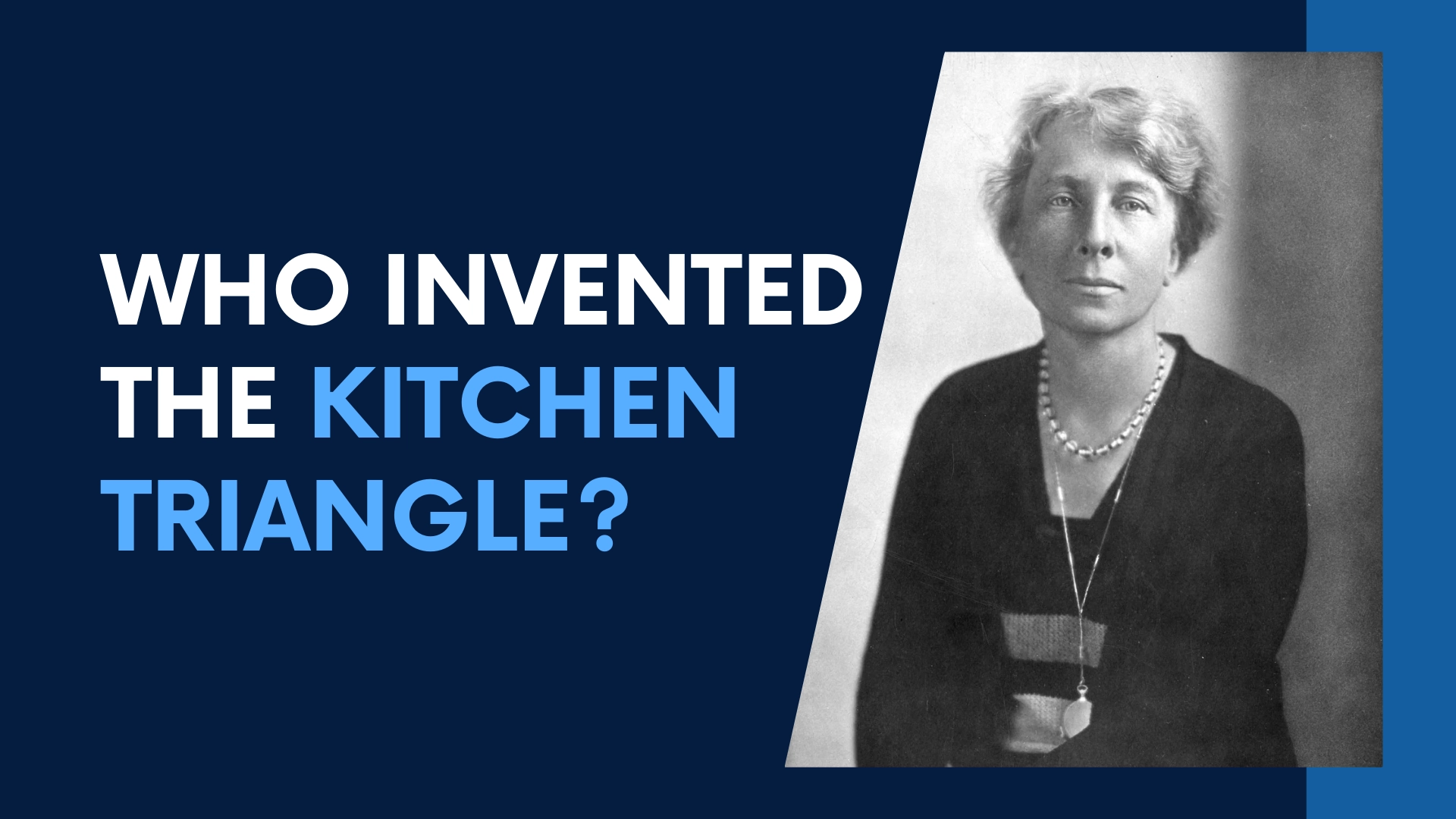
Question: Who invented the kitchen triangle?
Answer: The kitchen triangle’s Lillian Gilbreth. It evolved in the 1920s from the University of Illinois School of Architecture’s “Lillian Gilbreth’s Kitchen Practical” efficiency studies.
The History of the Kitchen Work Triangle
The kitchen triangle represents a key concept in kitchen design. It connects the three main work areas: the sink, the refrigerator, and the stove. This design promotes efficiency and reduces unnecessary steps while cooking. But who first conceived this idea? This article explores the origins and evolution of the kitchen triangle.
The Birth of an Idea: The Frankfurt Kitchen
The kitchen triangle’s roots trace back to the 1920s. Austrian architect Margarete Schütte-Lihotzky designed the Frankfurt Kitchen. Weimar Germany faced a housing shortage. Schütte-Lihotzky aimed to create an efficient and affordable kitchen for mass production. Her design emphasized minimizing movement and maximizing space utilization. The Frankfurt Kitchen incorporated specific work zones connected in a triangular layout. This layout optimized workflow and reduced wasted time. The design represented a significant advancement in kitchen planning, impacting later kitchen design concepts, including the modern kitchen triangle.
Click here to read more about Blue Kitchen Refacing
Related Article: What Is The CM Rule For The Kitchen Triangle?
The University of Illinois Study and Standardization
The University of Illinois School of Architecture conducted research on kitchen design in the 1940s. This research aimed to establish standards for kitchen planning. The researchers developed specific guidelines for the kitchen work triangle. These guidelines included recommended distances between the three points: sink, stove, and refrigerator. They also recommended a total distance of the triangle’s legs not exceeding 26 feet, and no single leg less than 4 feet. This study formalized the kitchen triangle concept, making it a cornerstone of modern kitchen design.
Evolution and Adaptations of the Triangle
The traditional kitchen triangle remains a valuable design principle, but modern kitchens sometimes deviate from its strict geometry. Open-plan layouts, multiple cooks, and specialized appliances like microwaves and second sinks have impacted kitchen workflows. Designers now adapt the triangle concept to suit these new realities. Some kitchens feature multiple work triangles, while others prioritize zones for specific tasks like baking or prepping. While the classic triangle’s form might change, its core principle of efficient movement within the kitchen endures.
Modern Interpretations: Beyond the Triangle
While the traditional triangle remains relevant, modern kitchen design sometimes breaks free from this rigid structure. Consider these modern interpretations:
The Kitchen Zone
Kitchen zones divide the kitchen into specific activity areas. For example, one zone could focus on food preparation, another on cooking, and a third on cleaning. This approach allows multiple people to work efficiently in the kitchen without crossing paths.
The Galley Kitchen
The galley kitchen, with its linear layout, represents a different take on the work triangle. Appliances and work surfaces are placed along two parallel walls, creating a compact and efficient workspace.
The One-Wall Kitchen
In smaller spaces, a one-wall kitchen design can be very effective. All appliances and work surfaces are positioned along a single wall. This compact arrangement minimizes movement and maximizes space utilization.
Conclusion – Who Invented The Kitchen Triangle?
The kitchen triangle’s history reflects a consistent drive for efficiency in kitchen design. From Margarete Schütte-Lihotzky’s Frankfurt Kitchen to the University of Illinois research, the triangle has played a vital role in shaping how we design and use kitchens. While modern trends and layouts continue to evolve, the core principles of the kitchen triangle remain important considerations for creating a practical and user-friendly kitchen space.

Blue Malue Get in touch with Blue here.
